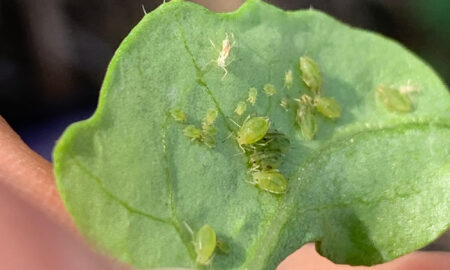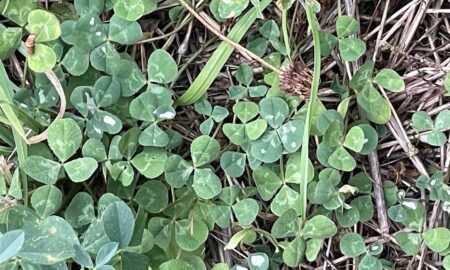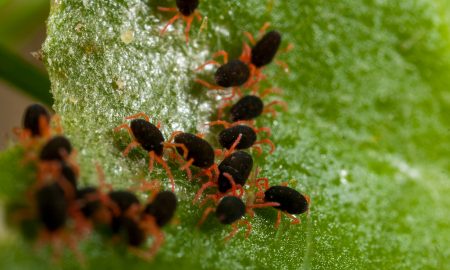The Russian wheat aphid (Diuraphis noxia, RWA) appears to be just waking from a sleepy start this season.
They were difficult to find in the green bridge during autumn and winter, and a lot of cereals had reportedly been treated with seed dressings prior to sowing. We believe that it was the combination of low densities in green bridge refuges, and widespread use of seed dressings that has set Russian wheat aphid back this season.
Now with the protective effects of insecticide seed dressings waning, and increased growth of preferred host crops and refuges across south-eastern Australia, sightings of Russian wheat aphid and/or symptoms are starting to pop up.
Where are they now?
One hotspot of Russian wheat aphid has been found in an early sown wheat crop at Bundella, in the NSW North West Slopes and Plains, where ladybird beetles and parasitic wasps are keeping the population in check.
Patchy and low Russian wheat aphid numbers have been reported between Oaklands and Jerilderie in the NSW Riverina, and near Parkes in the NSW Central West Slopes and Plains.
In some early sown wheat near Millthorpe in the NSW Central tablelands, approximately 20% plants have been affected with 10% tillers showing typical striping symptoms by Russian wheat aphid.
In Victoria, Russian wheat aphid symptoms were observed in areas of early sown and self-sown barley in the southern Mallee. They have also been spotted in cereal crops in East Gippsland.
What to expect during spring
While numbers have been low this season, and we don’t expect that it will be a big year for Russian wheat aphid, populations are likely to increase as we head towards warmer spring weather, which drives growth and increased aphid flights.
Economically significant yield impacts are more likely from infestations that occur before stem elongation, but only if these persist during the later (heading and flowering) stages.
Crops older than GS40 do not appear to be attractive to migrating Russian wheat aphid, therefore colonisation of such advanced crops during spring is unlikely.
Signs of infestation are usually very visible. Look for leaf streaking, which can appear white or purple. At late tillering and during stem elongation you may notice a flat habit and leaf rolling. Peeling back rolled leaves will often uncover the aphid.
Acknowledgements
Field observations
Zorica Duric, NSW DPI (North West Slopes & Plains)
Alistair Ferrier (Mallee, VIC)
Matt McRae, McRae Ag Solutions (Central Tablelands, NSW)
Michael Nash (East Gippsland, VIC)
Cover image: Photo by Elia Pirtle, Cesar Australia





